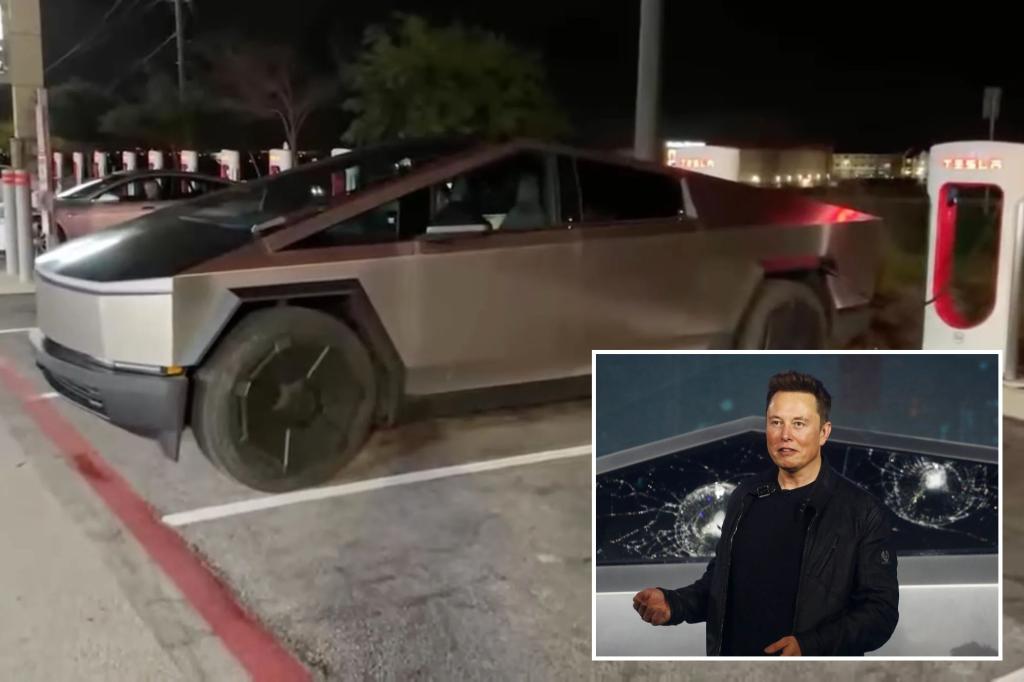- cross-posted to:
- technology@lemmit.online
- cross-posted to:
- technology@lemmit.online
Tesla Cybertruck gets less than 80% of advertised range in YouTuber’s test::A YouTuber took Tesla’s Cybertruck on a ride to see if it can actually hit its advertised 320-mile range, only to find out that its could only reach 79% of the target. When YouTuber Kyle Conn…



What was the EPA rated highway range? The 320 mile range is the EPA combined city/highway which you won’t hit doing entirely highway but you would beat doing entirely city.
Most EVs he’s tested hit or exceed the EPA range on this test. Even bricks like the EV9 exceed their EPA range in similar temps.
Why is the efficiency lower on highways?
Due to electric drivetrains having minimal fixed losses at low speed unlike internal combustion engines. Aerodynamic losses start becoming the largest factor for EVs at relatively low speeds (25-35 MPH) since other losses at so low. This shows up on tests as higher city efficiency and lower highway.
For an internal combustion engine you are burning a large amount of energy just to keep the engine running, so the slower the speed, the less distance traveled for the fixed amount of running losses and lower the MPG. It isn’t until higher speeds (55-65 MPH) that aerodynamic losses become the largest factor. This manifests as lower efficiency in the city tests and higher highway.
It’s also a factor that acceleration/deceleration in an ICE kills mileage. Highway tests maintain a constant speed. If you ran the same test at 35 mph, they would get much better mileage than at 55 (or 70)
Also regenerative breaking is not useful when you’re maintaining constant speed on the highway, but a huge leg-up in the city
Idle losses are real but not very substantial in a modern engine compared to the bigger factor you’re missing which is that in city driving tests there is a lot of speeding up and slowing down, ICE vehicles throw away all the energy used to slow down as heat in the brakes which makes city cycles particularly inefficient while an EV captures that energy through regenerative braking, dramatically reducing the net cost of those momentum changes.
Regenerative braking only can recapture something like 2-5% of lost energy. The bigger factor is exactly what the other person said.
This is just not true. Regenerative braking is much more efficient than that.
I’m not sure where that number came from but according to Wikipedia the conversion from momentum to electricity loses 10-20% and the conversion from electricity to battery storage is another 10-20% leaving a theoretical recovery at 60-70%. In real world tests, Teslas recovered 20-32% range with regenerative braking, a far cry from 2-5% you cite. https://electrek.co/2018/04/24/regenerative-braking-how-it-works/
Ah, good point, the speed changes for ICE results in lots of energy wasted as heat instead of being recaptured. That would certainly be the largest loss for an ICE in the city cycle.
That makes sense, thanks.
It has the aerodynamics of a brick
So does the EV9, but it exceeded the EPA range in the same test.
This was a highway test though, not how EPA test the ranges
I know. But this YouTube channel, Out of Spec, runs this exact same 70mph loop in every EV. A large number of them exceed their EPA rated range in this test. I mentioned the EV9 because it’s similar to the Cybertruck in many ways (a brick…), and I had just watched that range test this week.
Also worth noting the guy is a Tesla fanboy, so he’s not going to deliberately make the CT look bad.
Aha yes, but what about other EVs?
There’s more air resistance at higher speeds.
That doesn’t explain why ICE vehicles are much better efficiency-wise than EV ones at higher speeds, just why EVs don’t do so well. Another post responding to me addresses it well.
Do you mean that ICE is more efficient than EV at higher speeds, or that ICE scales better than EV?
ICE vehicles have better MPG at higher speeds, EVs at lower speeds.
Neither. ICE reaches its best efficiency at higher speeds than EV does, but it is still less efficient than EV at all speeds.
Aerodynamic drag increases with the square of speed. Other frictional losses might follow a similar pattern.
Cars have other sources of inefficiency too (such as idle power consumption), so all cars have a different optimum speed for maximum range (which depends on wind speed, direction & temperature too).
Air drag